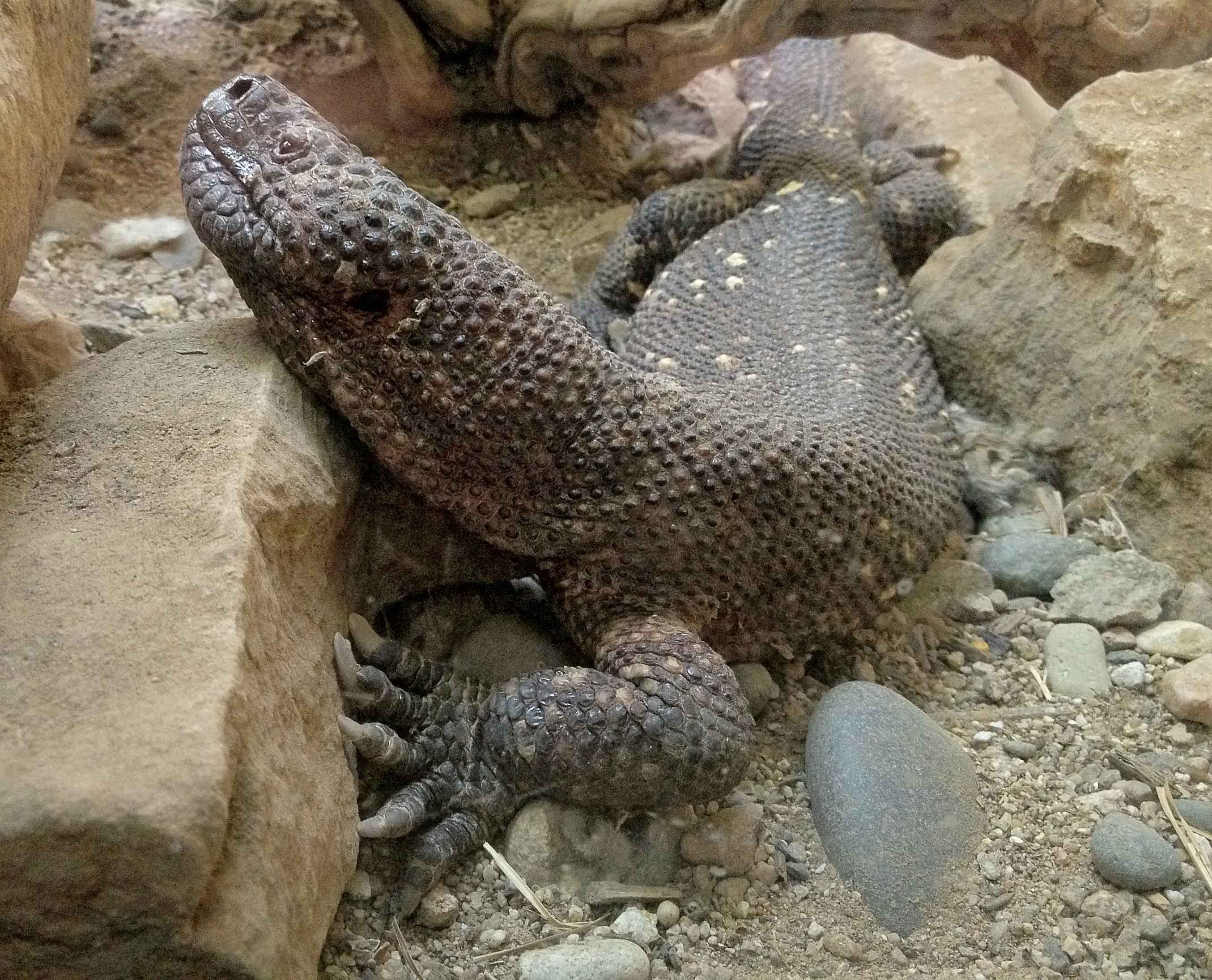Epidemiology
- Only 2 of the almost 3000 lizard species in the world are venomous
- Gila Monster (Heloderma suspectum): present in southwestern US and Mexico
- Mexican Beaded Lizard (Heloderma horridum): present in Mexico
- These lizards are not aggressive and most bites are related to human-initiated interaction with the lizard
Etiology
- Gila Monster (Heloderma suspectum)
-
Mexican Beaded Lizard (Heloderma horridum)

Physiology
- Mechanism of Envenomation
- Venom is elaborated from 8 glands in the floor of the lizard’s mouth and bathes the oral cavity
- Teeth are grooved posteriorly
- Lizard bites tenaciously and is often difficult to dislodge: may require removal of head, submersion in water, application of fire to dislodge
- Venom Components
- VIP-Like Biopeptides
- Kallikrein-like substances
- Neurotoxin: causes neuropathy
Clinical Manifestations
- Local Wound
- Excruciating pain with massive tissue edema, and erythrema
- Intense hyperesthesia of the wound may persist for weeks
- Excruciating pain with massive tissue edema, and erythrema
- Systemic Symptoms
- Blurred Vision
- Dizziness
- Dysphonia
- Dyspnea/Acute Hypoventilation (see Acute Hypoventilation) -> Respiratory Failure
- Hematemesis
- Nausea/Vomiting (see Nausea and Vomiting)
- Tachycardia (see Sinus Tachycardia)
- Weakness (see Acute Motor Deficit): may be profound
Treatment
- Removal of Lizard: may require removal of head, submersion in water, application of fire to dislodge lizard
- No Antivenin Available
- Constriction Band
- Cooling of the Wound Area
- Antibiotics
- Including coverage for Tetanus (Tetanus Toxoid or Immune Globulin)
- Analgesia: necessary
- Local
- Parenteral
References
- xxx
